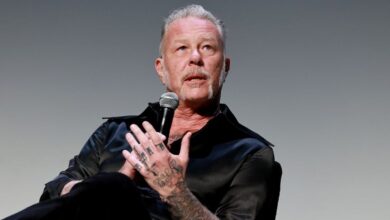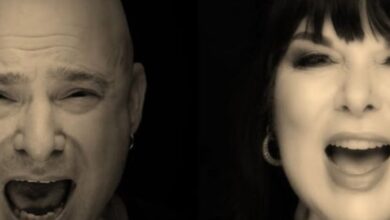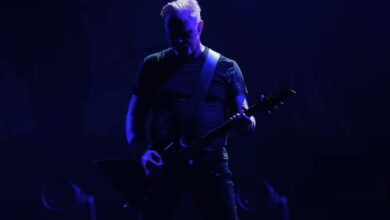Black Sabbath’s “Back to the Beginning” Farewell in Birmingham — A Monumental Last Riff on July 5, 2025
Black Sabbath’s farewell extravaganza, “Back to the Beginning,” transformed Birmingham’s Villa Park into a pilgrimage site on 5 July 2025. Long before the gates swung open, snaking queues of devotees in faded tour shirts swapped stories about discovering Sabbath on battered vinyl, late-night radio, or YouTube rabbit holes. When turnstiles finally clicked, forty thousand voices poured onto the pitch for an eleven-hour marathon designed to celebrate—not merely commemorate—the moment heavy metal came full circle in the city where it first roared to life.
The day’s lineup traced the genre’s family tree across decades. Slayer detonated “Raining Blood” under a burning afternoon sun; Anthrax hurtled through “Caught in a Mosh” like caffeinated juggernauts; Tool mesmerised everyone with rhythmic labyrinths that turned the stadium into a communal trance. Between sets, towering host Jason Momoa bounded across the stage, bellowing “Sabbath bloody Sabbath!” with the giddy enthusiasm of a lifelong fan who still can’t believe he’s been handed the mic.
Ozzy Osbourne’s solo interlude arrived at dusk, his throne bathed in purple beams slicing through a Midlands twilight. Despite Parkinson’s-tamed limbs, he flashed that mischievous grin and unleashed the unmistakable “Crazy Train” howl, parchment-ragged yet defiantly alive. The crowd’s roar suggested they understood they were witnessing the Prince of Darkness’s final sustained burst of stage magic, delivered in the very city where his legend began.
Moments later, bathed in crimson spotlights, Tony Iommi and Geezer Butler stepped forward, their instruments gleaming as they unleashed the notorious tritone that opens “Black Sabbath.” That unsettling “devil’s interval” rippled goosebumps from the front rail to the highest tier, reminding everyone how dangerous the song still feels fifty-five years after frightening London clubs. Iommi’s prosthetic-aided fingers danced with undiminished menace, proving invention can outshine limitation.
Then came the night’s most talked-about spectacle: Bill Ward, bare-chested at seventy-seven, hammering toms as though 1968 had never ended. White hair whipped in the wind, sweat carved gleaming tracks down tattooed shoulders, and every cymbal crash punctuated decades of estrangement now forgiven before tens of thousands. When Ward flicked a drumstick at Iommi during “Fairies Wear Boots,” the guitarist’s answering grin spoke volumes about brotherhood mended by music.
Metallica’s surprise cameo ignited fresh pandemonium. James Hetfield stalked the stage barking a snarling cover of “Sabbra Cadabra,” while Kirk Hammett’s wah-drenched solos spiralled skyward. The gesture underscored thrash metal’s debt to its Birmingham forefathers and reframed the evening as a torch-passing ceremony—fathers of metal blessing their most successful sons amid a crescendo of communal riffs.
Unexpected collaborations kept jaws perpetually ajar. Steven Tyler howled the blues-tinged intro of “Sweet Leaf” beside Billy Corgan’s fuzz-laden guitar. Minutes later, a charity super-group—Sammy Hagar, Duff McKagan, and Zakk Wylde—turned “Children of the Grave” into a stadium-wide sing-along that reportedly raised millions for Cure Parkinson’s, Birmingham Children’s Hospital, and local hospices. Heavy music never felt more humanitarian.
Beyond the stage, Villa Park pulsed with carnival energy. Merch stalls hawked replica 1970 posters, food trucks served “War Pigs” pulled-pork sandwiches, and pop-up exhibits traced Sabbath’s influence from skate-punk to Norwegian black metal. Fans queued for a VR booth recreating the band’s first rehearsal room above Aston Community Centre, complete with scratchy amps, peeling walls, and the faint smell of spilled stout.
As midnight neared, volunteers handed out candles, their flicker casting gothic silhouettes across the terraces. A lone bell tolled while giant screens ran archival footage: muddy fields at the 1970 Bath Festival, snow-flecked Madison Square Garden in 1975, a star-struck teenage Lars Ulrich waiting for autographs in 1981. Each grainy clip felt like the collective memory of heavy metal projected in IMAX scale.
Back onstage, Ozzy returned for the warhorse quartet that would close the book. “War Pigs” crept forward at an ominous crawl, the crowd roaring “Generals gathered in their masses” with chilling unity amid present-day geopolitical tensions. Iommi’s solo arrived alongside pyrotechnic mortars bursting crimson X-shapes overhead, framing his silhouette like a stained-glass demon in an iron cathedral.
“Into the Void” followed, its galactic riff echoing humanity’s Mars ambitions as Geezer’s low-end rattled beer cups two tiers up. Ward, less frenetic than in ’71 but no less authoritative, later admitted every kick-drum hit felt like “closing a chapter with an exhalation.” The song’s dystopian lyrics suddenly sounded more like prophecy than science fiction.
A drum-circle breakdown during “Children of the Grave” united Travis Barker, Chad Smith, and Danny Carey for twenty-second bursts each, conducted by Ward’s twirling sticks. The unlikely lineup bridged generations and genres, coaxing Blink-182, Chili Peppers, and Tool fans to head-bang in harmony while stadium cameras captured kids on parents’ shoulders flashing first-ever devil horns.
The sirens that usher in “Paranoid” triggered a firework blitz spelling “THE END” across the Holte End stand. Ozzy, summoning reserves unknown, shuffled center-stage for one last bow beside Tony and Geezer. Confetti cannons coated the pitch in silver crosses, and Ward flung his final sticks into an ocean of reaching hands before the quartet clasped arms and took a solemn, grateful bow.
As lights dimmed, a recorded message rolled: “Thank you for half a century of madness. Stay heavy, stay free.” Fans lingered long after crews began dismantling risers, flooding nearby pubs that kept “Snowblind” and “Iron Man” on repeat until dawn. The afterglow felt less like an ending and more like the ignition of thousands of new bands now determined to carry the torch.
Economists predicted Birmingham would see an immediate twenty-million-pound boost, with hotels sold out, tour companies announcing “Heavy Metal Heritage” walks, and councillors hinting at a permanent monument near Aston Cross. Yet the real legacy—confidence granted to outsiders who learned to channel angst into art—remained incalculable, inscribed in scars, tattoos, and riffs that refuse to fade.
Long after the amps cooled, social feeds brimmed with backstage clips: Hetfield embracing Ozzy in tears, Slipknot’s Eloy Casagrande sobbing as he met Ward, and Ward himself, shirtless and triumphant, declaring, “We did it, lads.” In those candid moments, Black Sabbath’s often turbulent history crystallised into a single unassailable truth: four working-class kids from Birmingham built a subculture whose pulse will thunder long after the last power chord decays.





